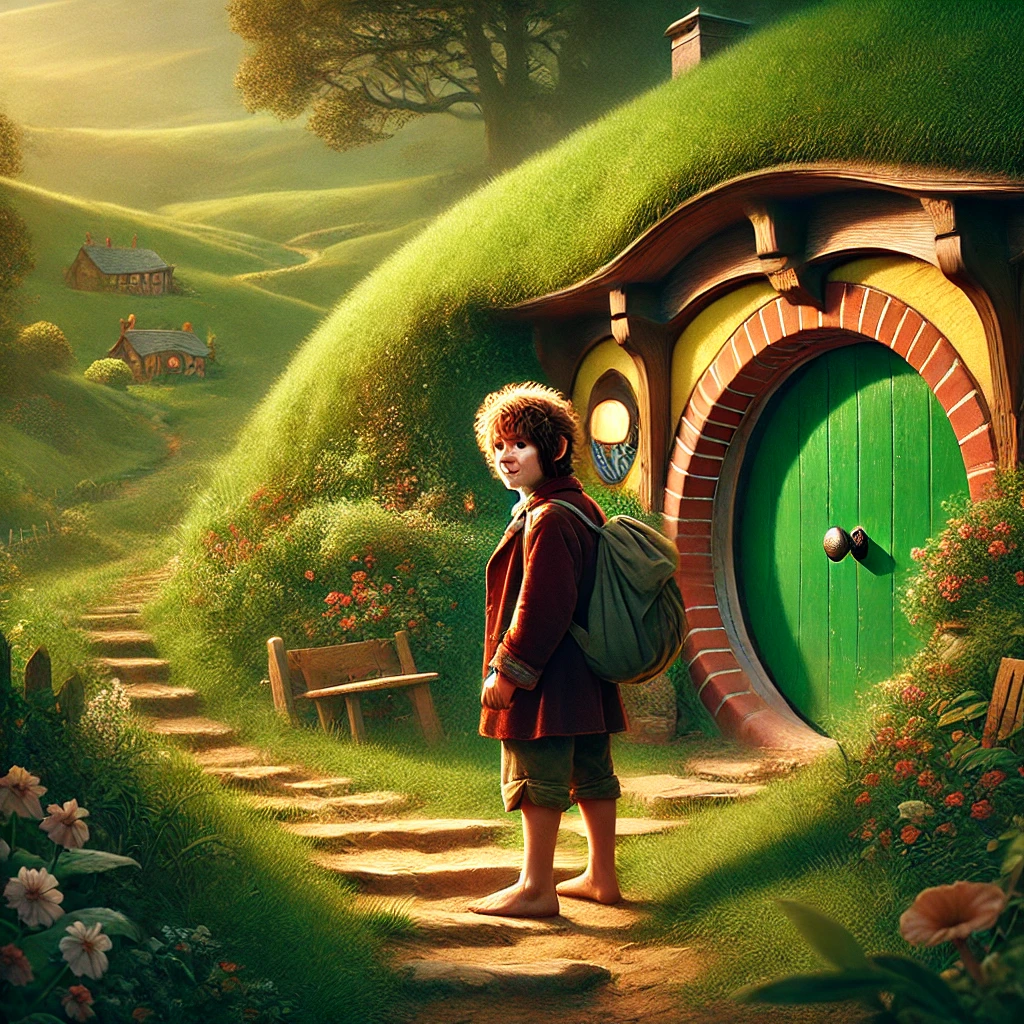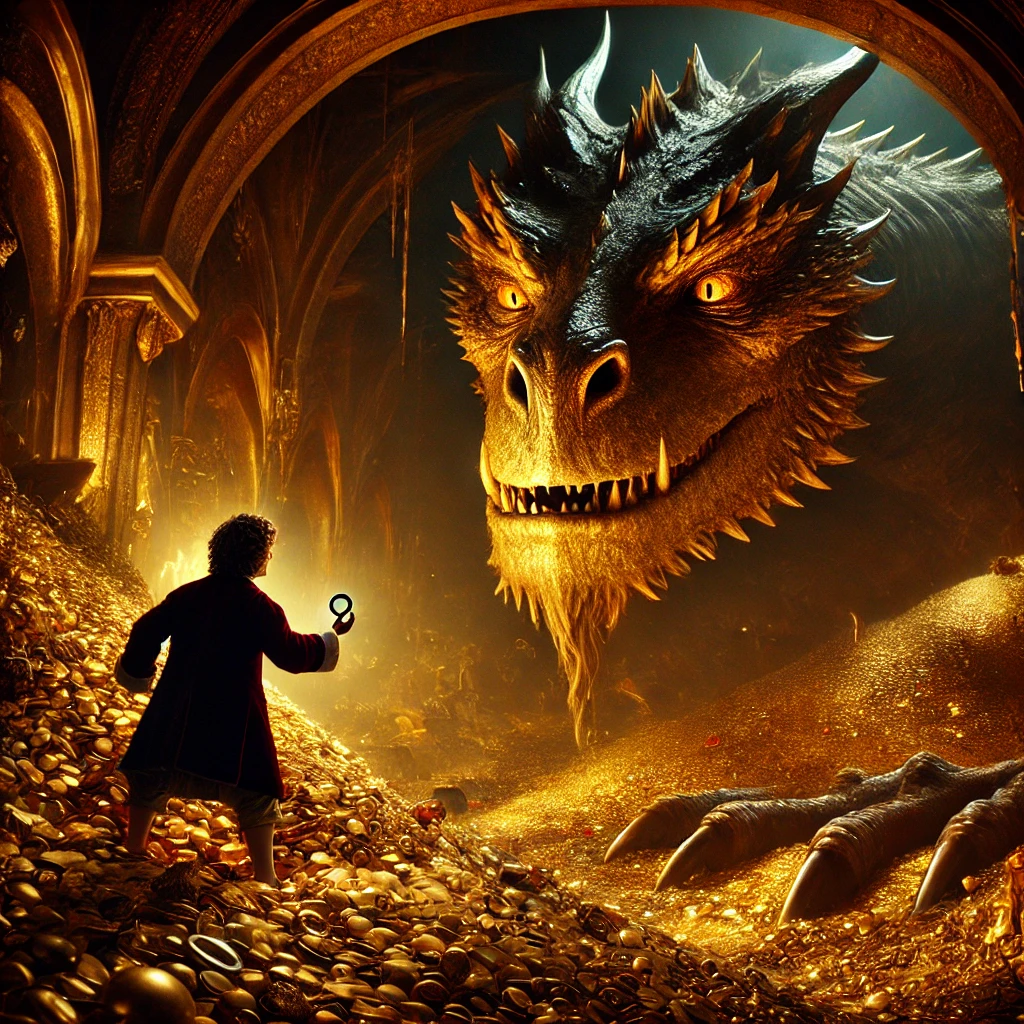A New World of Fantasy Unveiled
On September 21, 1937, English writer J.R.R. Tolkien’s The Hobbit was published, marking the beginning of one of the most beloved fantasy sagas in literature. This whimsical and enchanting tale, centered on the unlikely hero Bilbo Baggins, captured readers’ imaginations with its richly detailed world of Middle-earth, its captivating characters, and timeless themes of courage, friendship, and adventure. Originally written as a children’s book, The Hobbit quickly became a classic that would inspire not only young readers but adults alike, earning a permanent place in the literary canon.

Tolkien’s work didn’t just stop with The Hobbit; it paved the way for the even more complex The Lord of the Rings trilogy, solidifying Tolkien’s place as one of the most influential authors of the 20th century. But it all started with this simple tale of a hobbit’s journey.
The Story That Started It All
At its core, The Hobbit is a coming-of-age story, following the reluctant Bilbo Baggins as he is swept into an epic quest with a group of dwarves to reclaim their homeland from the fearsome dragon Smaug. Along the way, Bilbo encounters a host of memorable characters, from elves and goblins to trolls and the iconic Gollum, from whom Bilbo acquires the One Ring. Although initially hesitant and unsure, Bilbo’s bravery and cleverness emerge throughout the adventure, making him a hero in his own right.

The tale’s lighthearted tone and imaginative narrative structure captivated readers, blending humor, suspense, and moral lessons in a way that was accessible to a wide audience. While Tolkien initially intended The Hobbit as a children’s story, its themes of resilience, growth, and self-discovery resonate with readers of all ages, making it a timeless piece of literature.
A Lasting Legacy in Fantasy
Beyond the charm of its characters and narrative, The Hobbit has had an immeasurable impact on the genre of fantasy literature. Tolkien’s detailed world-building, with its own languages, cultures, and histories, set a new standard for the genre. Before Tolkien, fantasy literature often lacked the depth and structure that he brought to Middle-earth. His creation of complex, interconnected mythologies would inspire generations of fantasy writers, from C.S. Lewis to George R.R. Martin. Tolkien’s influence is seen not only in books but also in the realms of film, gaming, and popular culture. Peter Jackson’s The Hobbit and The Lord of the Rings film adaptations brought Tolkien’s world to life for a new generation, further expanding the fanbase and introducing Middle-earth to millions around the globe. The imagery, themes, and archetypes created by Tolkien remain staples of modern fantasy, influencing countless stories that followed.

Cultural and Linguistic Contributions
One of Tolkien’s most enduring legacies is his intricate use of language. A philologist by trade, Tolkien’s passion for linguistics deeply influenced his writing. He famously created entire languages for the peoples of Middle-earth, such as Elvish (Quenya and Sindarin), Dwarvish (Khuzdul), and the Black Speech of Mordor. These languages were not mere gimmicks; they added layers of depth to the cultures and histories within his world, making Middle-earth feel real and lived-in. This dedication to language and mythology was groundbreaking in literature and continues to inspire authors, linguists, and fans who study and even speak the languages Tolkien created. His linguistic achievements are often viewed as a significant reason for the enduring fascination with his work.
A Continued Relevance Today
More than 85 years after its initial publication, The Hobbit continues to be a beloved story that resonates with readers of all ages. It remains a staple in classrooms, libraries, and homes across the world. Whether read for the first time by a child or revisited by an adult, the themes of bravery, humility, and self-discovery that run through Bilbo’s journey are as relevant now as they were in 1937. Tolkien’s work, particularly The Hobbit, reminds readers of the power of storytelling to transport us to new worlds, teach us valuable lessons, and connect us to something greater than ourselves. As Bilbo Baggins once said, “I’m going on an adventure,” and thanks to Tolkien, generations of readers continue to join him on that journey.
